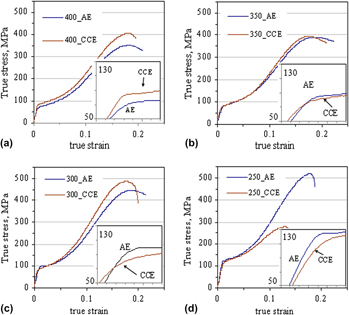Article contents
Microstructure and compression behavior of chip consolidated magnesium
Published online by Cambridge University Press: 12 January 2012
Abstract

Chips produced by turning a commercial purity magnesium billet were cold compacted and then hot extruded at four different temperatures: 250, 300, 350, and 400 °C. Cast billets, of identical composition, were also extruded as reference material. Chip boundaries, visible even after 49:1 extrusion at 400 °C, were observed to suppress grain coarsening. Although 250 °C extruded chip-consolidated product showed early onset of yielding and lower ductility, fully dense material (extruded at 400 °C) had nearly 40% reduction in grain size with 22% higher yield strength and comparable ductility as that of the reference. The study highlights the role of densification and grain refinement on the compression behavior of chip consolidated specimens.
Keywords
- Type
- Articles
- Information
- Copyright
- Copyright © Materials Research Society 2012
References
REFERENCES
- 5
- Cited by




